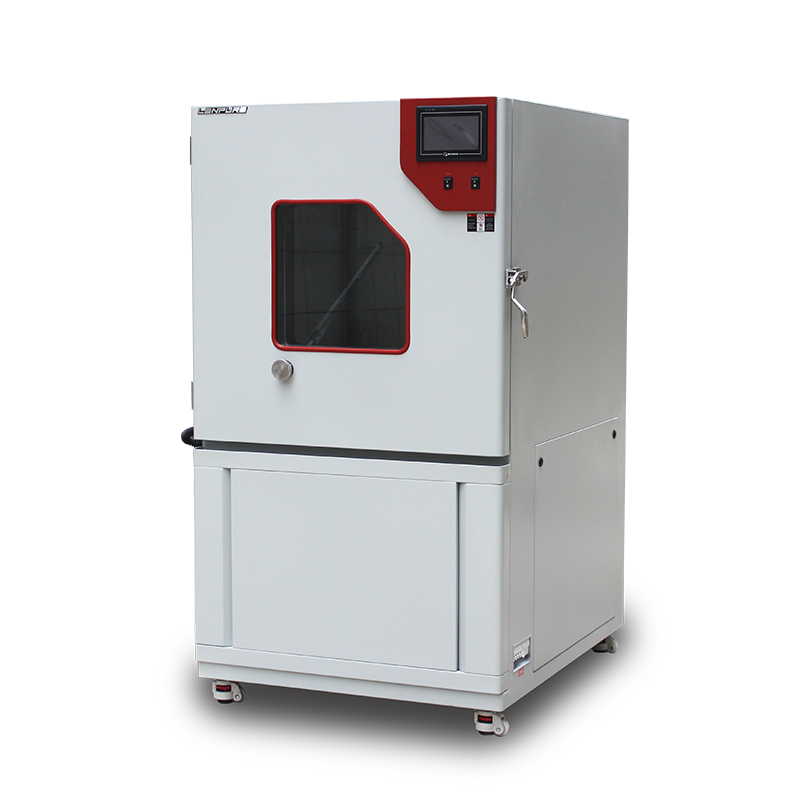

I. Framing the Issue
Dust testing, codified in GB/T 2423.37 and IEC 60068-2-68, is now mandatory for proving the sealing integrity and reliability of military, automotive, photovoltaic and rail-transit products. Direct test outlays—consumables, energy, labour and depreciation—seldom exceed one to three per cent of the selling price, yet hidden expenses triggered by poor chamber selection—repeat tests, invalid data or after-sales downtime—can leap to eight to twelve per cent. The purchase price is therefore only the visible tip of an iceberg; the true determinant of long-term profitability is the Life-Cycle Cost (LCC).

II. Deconstructing LCC
IEC 60300-3-3 splits LCC into six pillars:
Capital expenditure: equipment price, freight, rigging, foundation and training;
Operating expenditure: electricity, water, gas, dust media (talc, quartz), labour;
Maintenance: scheduled service, fault repair, spare-part inventory and outage losses;
End-of-life: dismantling, environmentally sound disposal and residual value;
Risk: test failure, data challenges, customer penalties and brand erosion;
Upgrade: software revisions, standard migrations and capacity extensions.
Empirical evidence shows that, over a ten-year depreciation horizon, OPEX plus maintenance routinely absorbs more than sixty-five per cent of LCC, whereas the initial cheque represents barely twenty-five to thirty per cent. Benchmarking “bare-machine” quotes in isolation is thus a shortcut to a high-cost trap.
III. Quantitative Influence of Key Performance Attributes
Sealing and self-cleaning
Inferior door seals and labyrinth gaps allow dust to escape, multiplying HVAC filter replacements by a factor of three to five and risking environmental fines. A one-cubic-metre chamber releasing more than five milligrams of dust per cubic metre per year will add roughly eight thousand yuan annually in filter changes and inflate air-conditioning energy by six per cent.
Dust recovery and recirculation
A high-efficiency cyclone coupled to an electrostatic precipitator can push talc recovery to ninety-five per cent, cutting consumption by four hundred kilograms a year—about six thousand yuan—while reducing hazardous-waste disposal fees by a further three thousand yuan.
Thermal efficiency and insulation
Operating temperatures hover between twenty-three and sixty degrees Celsius. Fifty millimetres of polyurethane foam plus dual gaskets lowers the heat-loss coefficient to 0.35 W m⁻² K⁻¹, an eighteen-per-cent improvement over mineral wool. At an industrial tariff of 0.8 yuan kWh⁻¹ and two thousand running hours per year, the saving is sixteen hundred kilowatt-hours, or thirteen hundred yuan, per annum.
Automation and unattended operation
Programmable-logic controllers integrated with data-acquisition software can execute the full “dust-on – dust-off – vibration – vacuum” cycle without operator intervention, releasing 0.5 full-time equivalent. With annual labour priced at one hundred and fifty thousand yuan, the decade benefit reaches seven hundred and fifty thousand yuan.
Calibration and data traceability
Built-in online modules for wind-speed and dust-concentration calibration extend the third-party recalibration interval from six to twelve months, saving four thousand yuan per event and eliminating repeat tests worth twenty thousand yuan each.
IV. Side-by-Side Evaluation: Low-Price Unit versus High-Performance Unit
Consider an automotive-component supplier running three hundred batches a year, depreciating equipment over ten years, paying 0.8 yuan kWh⁻¹ for electricity, fifteen thousand yuan per tonne for talc and one hundred and fifty thousand yuan per operator.
The low-price unit is acquired for ninety-eight thousand yuan, consumes nineteen megawatt-hours per year, uses nine hundred kilograms of dust annually, requires one full-time technician, incurs twelve thousand yuan a year in maintenance and suffers four downtime events per year, each costing twenty thousand yuan in lost productivity. Its ten-year LCC aggregates to roughly one hundred and forty-two million yuan.
The high-performance unit costs one hundred and forty-two thousand yuan up-front, draws only thirteen megawatt-hours per year, consumes four hundred kilograms of dust, needs half an operator, is maintained for three thousand yuan annually and averages one outage every two years. Its ten-year LCC is about eighty-eight million yuan.
Although the premium model demands an extra forty-four thousand yuan at purchase, it returns five hundred and forty thousand yuan over the decade, yielding a pay-back period of merely one year and eight months.
V. Four Practical Levers to Compress Operating Costs
Institute a total-cost-of-ownership (TCO) model that embeds net-present-value and sensitivity analyses, treating electricity price, test volume and labour inflation as stochastic variables to stress-proof the decision.
Adopt an Equipment-as-a-Service (EaaS) contract where the manufacturer retains ownership and charges per test, converting capital outflow into an operational expense while assuming maintenance, calibration and upgrade risks.
Deploy digital operations: IoT sensors for current, airflow and filter differential pressure, coupled with AI-driven predictive maintenance, can cut unplanned downtime by forty per cent and trim spare-part inventory by twenty-five per cent.
Pursue green life-cycle design: select RoHS- and REACH-compliant refrigerants and dust media to avert future retrofit liabilities, and specify aluminium frames with modular sub-assemblies to lift residual value to fifteen per cent, lowering end-of-life cost.
VI. Closing Remarks
Selecting a dust test chamber is a ten-year cost chess game. Escaping the “price-only” mindset and building a techno-economic framework anchored on LCC enables a system optimum that balances acquisition, operating and risk expenditures. With three decades of specialization in environmental simulation, we offer turnkey solutions—from needs assessment, TCO modelling and bespoke engineering to lifetime service—empowering clients to perpetually drive down cost, enhance quality and elevate efficiency. Visitors are welcome to our plant to explore partnerships and co-create value.